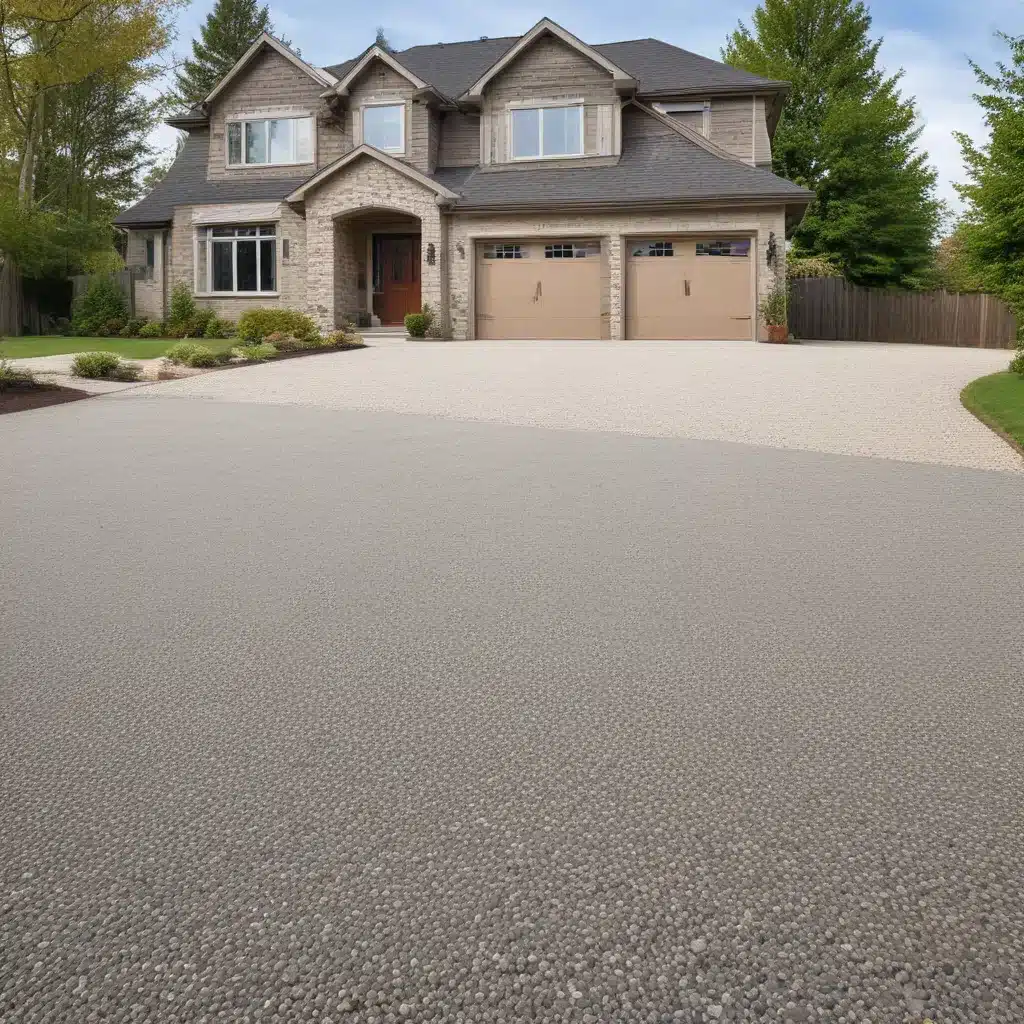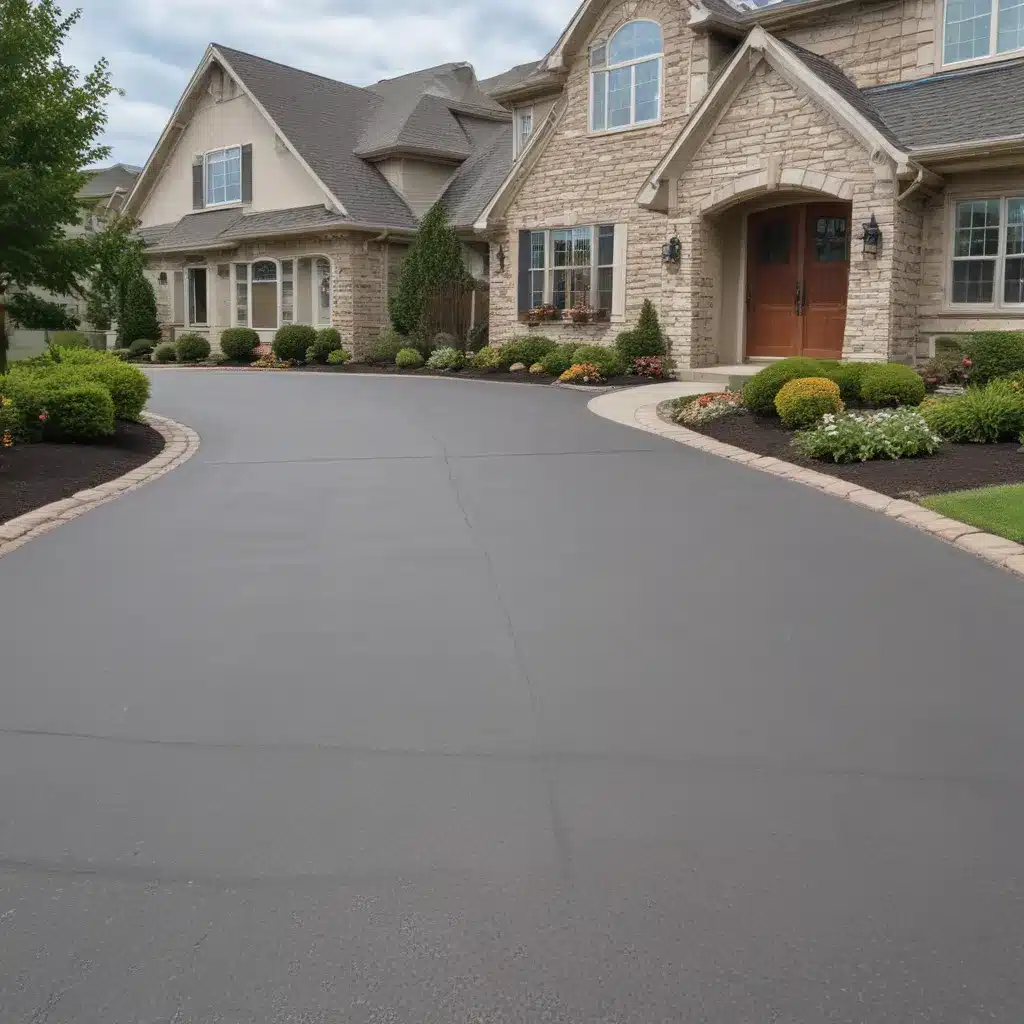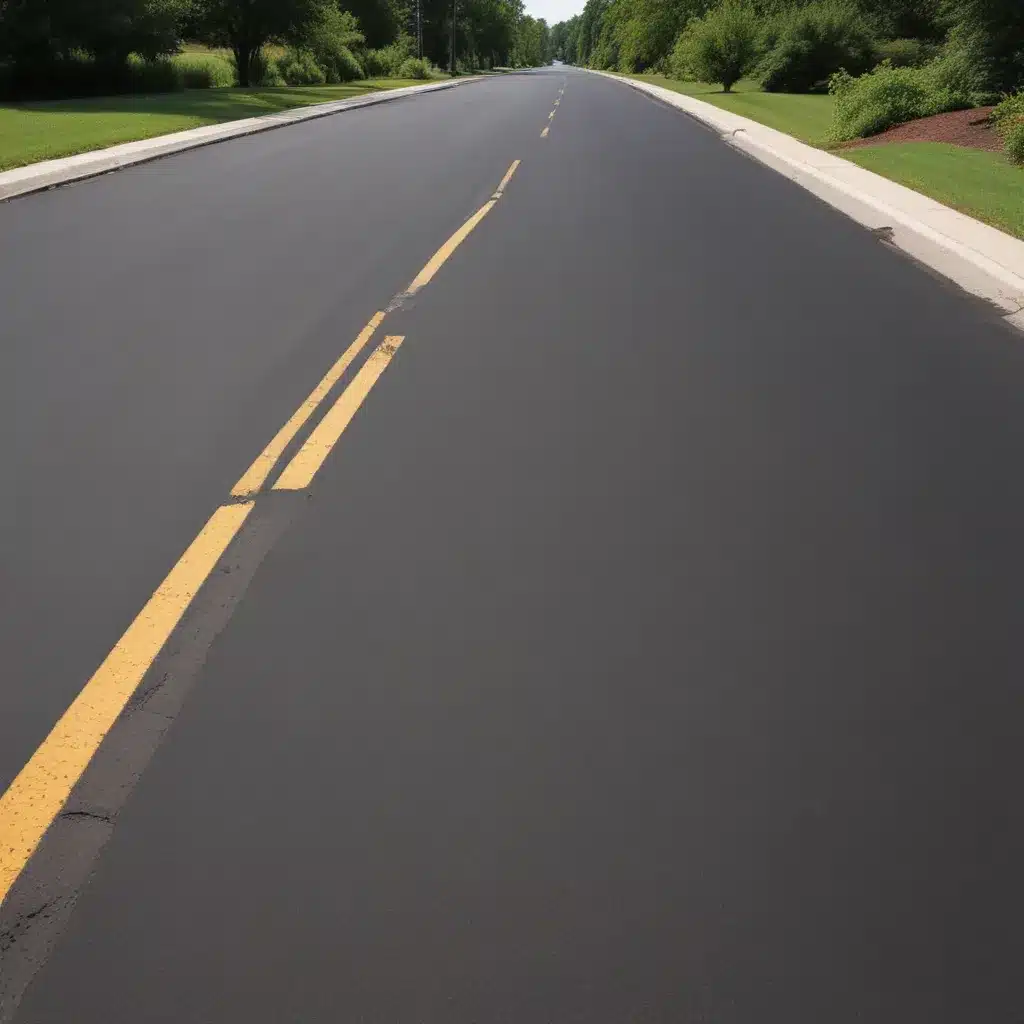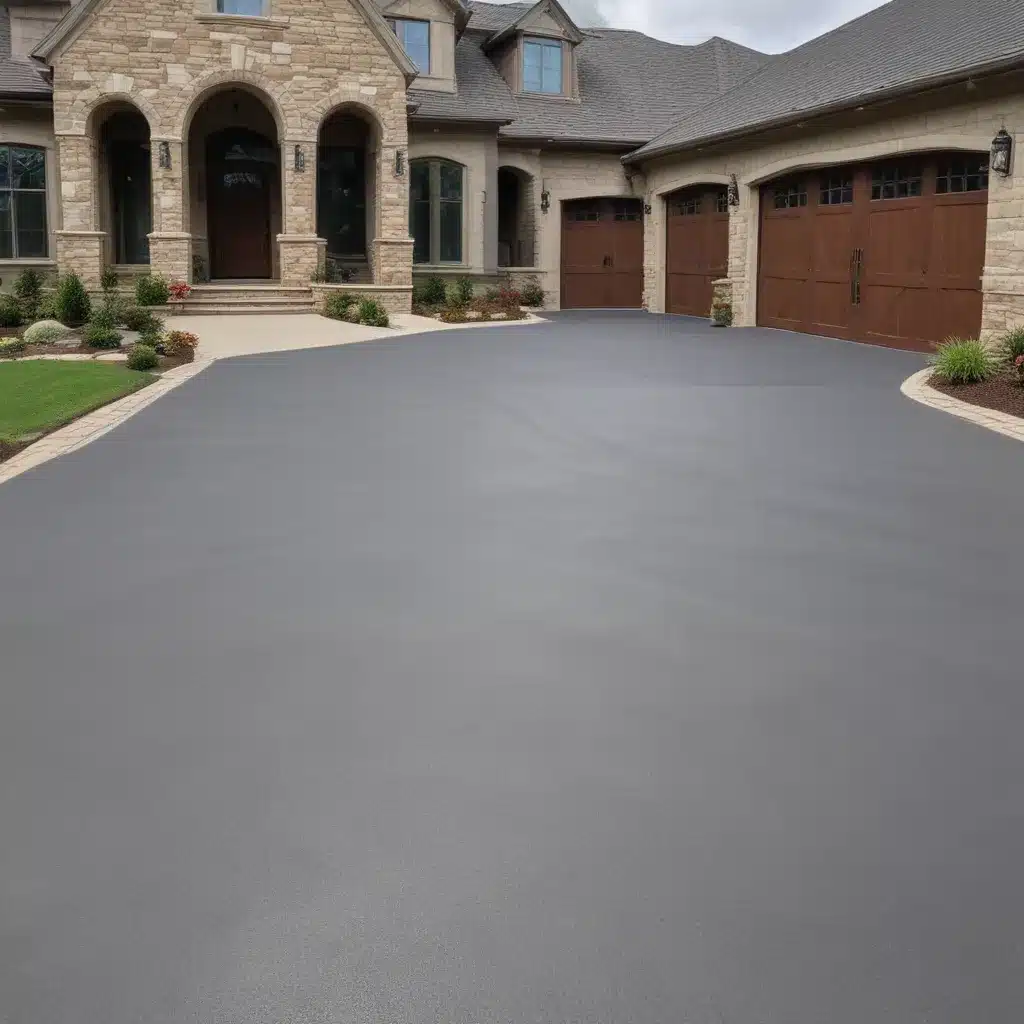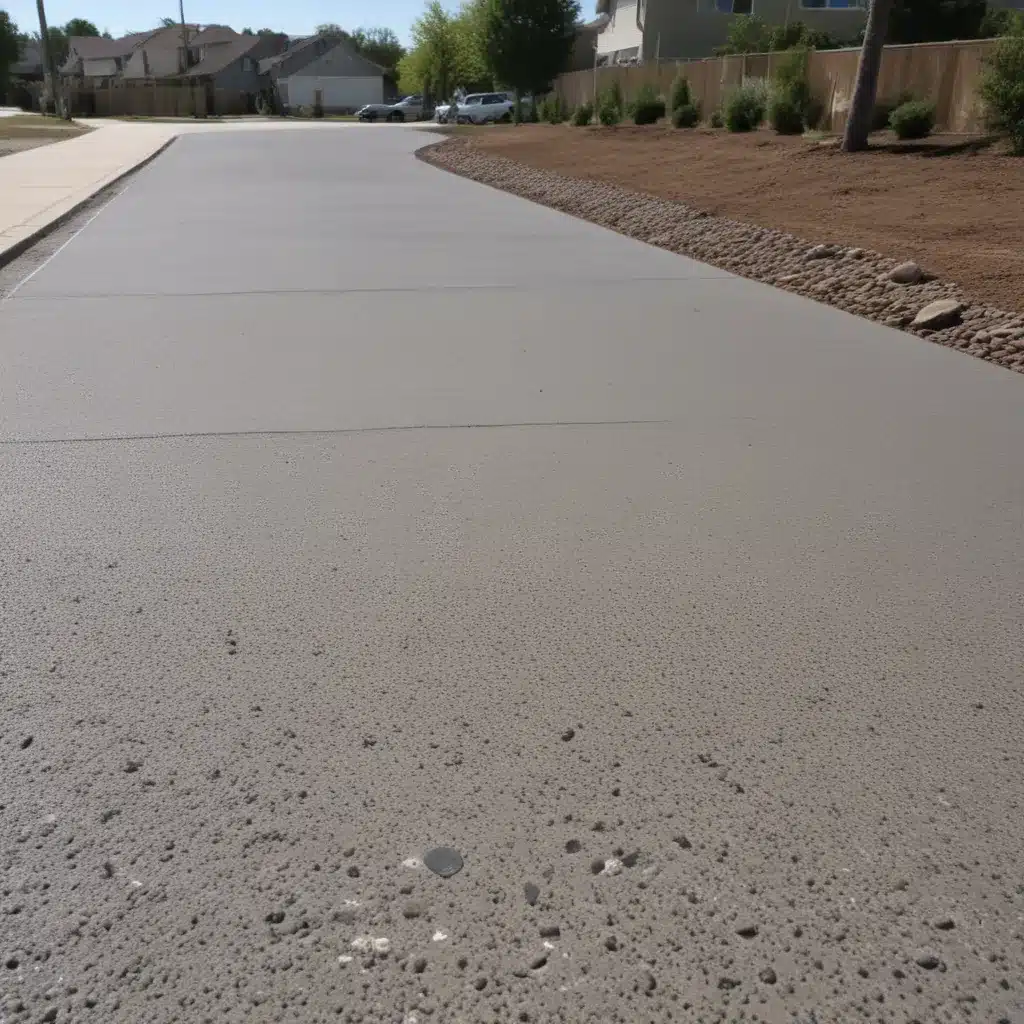The Allure of Gravel Driveways
I must admit, there’s just something about the crunching sound of gravel underfoot that fills me with a sense of rustic charm. Perhaps it’s the way the sun glistens off the small stones, or the feeling of walking on a surface that’s both sturdy and tactile. Whatever the reason, gravel driveways have long held a special place in the hearts of homeowners who value both form and function.
But before you go rushing out to transform your driveway, it’s important to understand the full scope of what a gravel surface entails. In this comprehensive guide, I’ll explore the pros and cons of gravel driveways, as well as share some essential maintenance tips to keep your drive looking its best for years to come. So strap in, because we’re about to dive deep into the wonderful world of gravel.
The Pros of Gravel Driveways
Let’s start with the positives, shall we? One of the biggest draws of gravel is its affordability. Compared to other driveway materials like concrete or asphalt, gravel is significantly less expensive to purchase and install. This makes it an attractive option for homeowners on a tighter budget.
But cost isn’t the only benefit. Gravel driveways are also incredibly low-maintenance. Sure, you’ll need to occasionally top up the gravel and smooth out any ruts or holes, but compared to the regular sealcoating and resurfacing required for asphalt or the cracking and heaving that can occur with concrete, gravel is a relative breeze to keep in tip-top shape.
Another perk? Gravel is highly permeable, allowing water to easily drain through instead of pooling on the surface. This not only helps prevent pesky puddles, but also reduces the risk of erosion and the need for expensive drainage systems. And let’s not forget the aesthetic appeal – the natural, rustic look of a gravel driveway can add serious curb appeal to any property.
The Cons of Gravel Driveways
Of course, nothing is perfect, and gravel driveways come with their fair share of drawbacks as well. For one, the loose stones can make the surface less stable and secure, particularly for elderly or mobility-impaired individuals. The gravel can also get tracked into the home, leading to extra cleaning and potential damage to flooring.
And while gravel may be cheaper upfront, the long-term costs of regular maintenance and occasional replenishment can add up over time. Plus, the permeable nature of gravel can sometimes lead to weeds and other unwanted vegetation taking root, requiring regular weeding and edging to keep the drive looking its best.
Finally, there’s the issue of dust. Gravel driveways can kick up quite a bit of dust, particularly during dry spells, which can be a nuisance for both homeowners and neighbors alike. This may be a particular concern for those with asthma or other respiratory conditions.
Maintaining Your Gravel Driveway
Alright, now that we’ve covered the pros and cons, let’s talk about the all-important topic of maintenance. After all, keeping your gravel driveway in tip-top shape is key to ensuring it looks great and functions properly for years to come.
The first and most obvious task is regular topping up. Over time, the gravel will start to shift, settle, and get worn down, so you’ll need to add more material to keep the surface level and well-covered. Aim to do this every 1-2 years, or as needed based on wear and tear.
Edging and weeding are also essential. Those pesky weeds and grass can quickly take over if left unchecked, so be sure to stay on top of pulling them out and keeping the edges nice and neat. And don’t forget about raking and smoothing the gravel – this will help maintain an even, attractive surface.
Finally, consider adding a binding agent like crushed rock dust or limestone to help lock the gravel in place and reduce dust. This can be a game-changer, especially for driveways that see a lot of traffic. Just be sure to follow the manufacturer’s instructions carefully for best results.
Real-World Examples and Expert Insights
Now, I know what you might be thinking – this all sounds well and good, but how does it play out in the real world? Well, let me share a few examples that might help bring this all to life.
Take the case of the Johnson family, for instance. They opted for a gravel driveway when building their new home a few years ago, lured in by the budget-friendly price tag and the idea of a more rustic, country-inspired look. But they quickly learned that the dust and loose stones were a bit more of a headache than they had anticipated.
“The kids were constantly tracking gravel into the house, and we spent what felt like endless hours sweeping and vacuuming,” Mrs. Johnson lamented. “And don’t even get me started on the dust – it was a nightmare, especially on windy days.” Ultimately, they ended up springing for a binding agent, which helped significantly, but the Johnsons admit they’ve occasionally daydreamed about paving over the gravel entirely.
On the flip side, I had the chance to chat with Sarah, a longtime gravel driveway enthusiast who swears by the material. “I love the look and feel of a gravel drive – it just has such a lovely, natural vibe,” she gushed. “And the maintenance really isn’t that bad, as long as you stay on top of it. I find raking and topping up the gravel to be quite meditative, actually.”
Sarah also highlighted the environmental benefits of gravel, noting that it’s a more permeable and eco-friendly option compared to impervious surfaces like concrete or asphalt. “Plus, if I ever need to expand or reconfigure the driveway, it’s so much easier with gravel than having to jackhammer up concrete,” she added with a chuckle.
Conclusion: Weigh the Pros and Cons Carefully
So, there you have it – the comprehensive guide to gravel driveways that you never knew you needed. From the allure of that satisfying crunch underfoot to the occasional dust-induced headache, I’ve covered the full gamut of what to expect.
Ultimately, whether a gravel driveway is the right choice for your home will come down to carefully weighing the pros and cons. Consider your budget, your aesthetic preferences, and your tolerance for ongoing maintenance. And don’t be afraid to get creative – maybe a mixed material approach, with gravel complementing concrete or pavers, could be the perfect compromise.
Whichever route you choose, I hope this guide has given you a solid foundation to make an informed decision. And remember, the team at NW Driveways is always here to lend a helping hand, whether you need expert installation advice or a helping hand with that never-ending gravel top-up.

